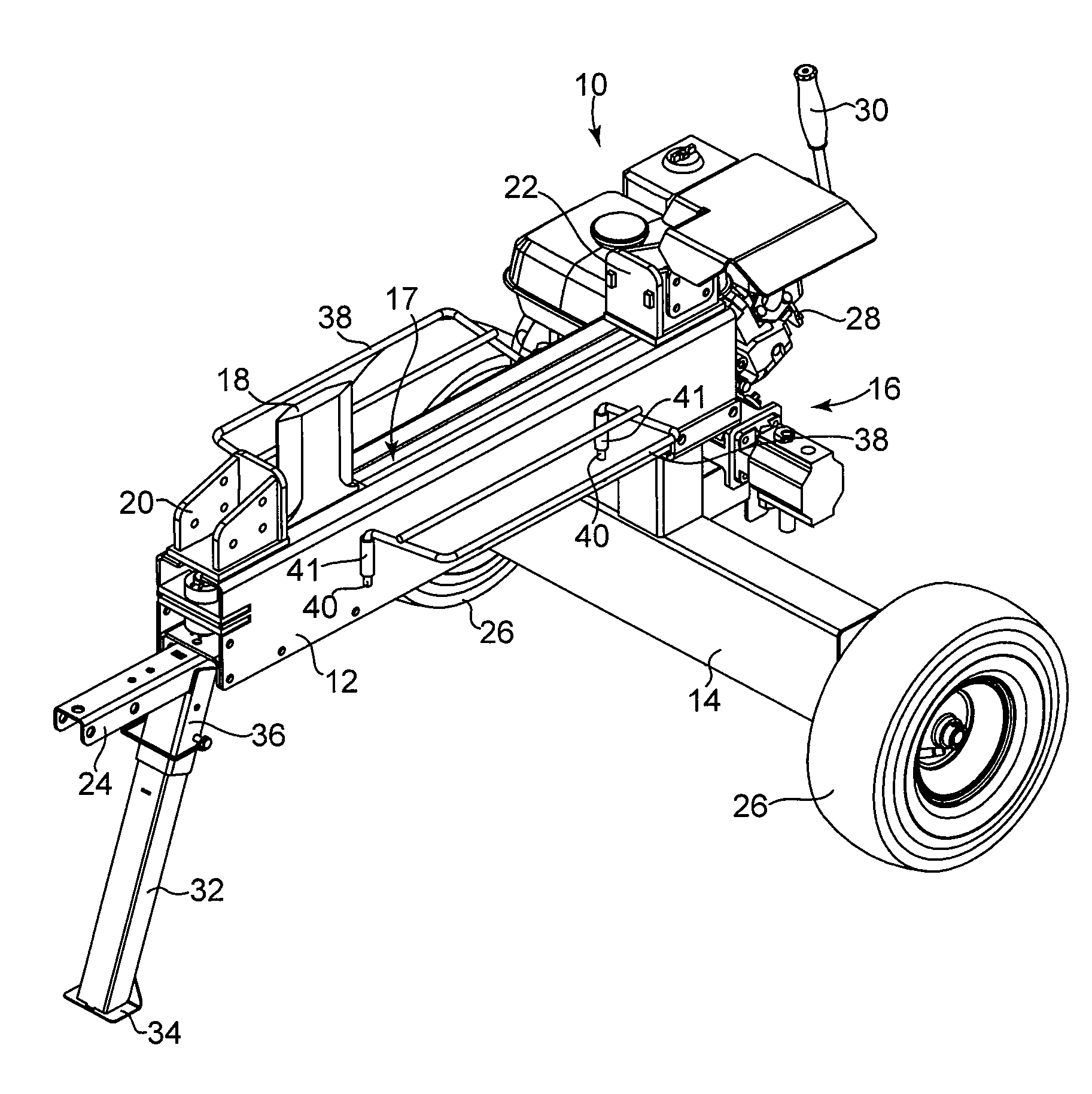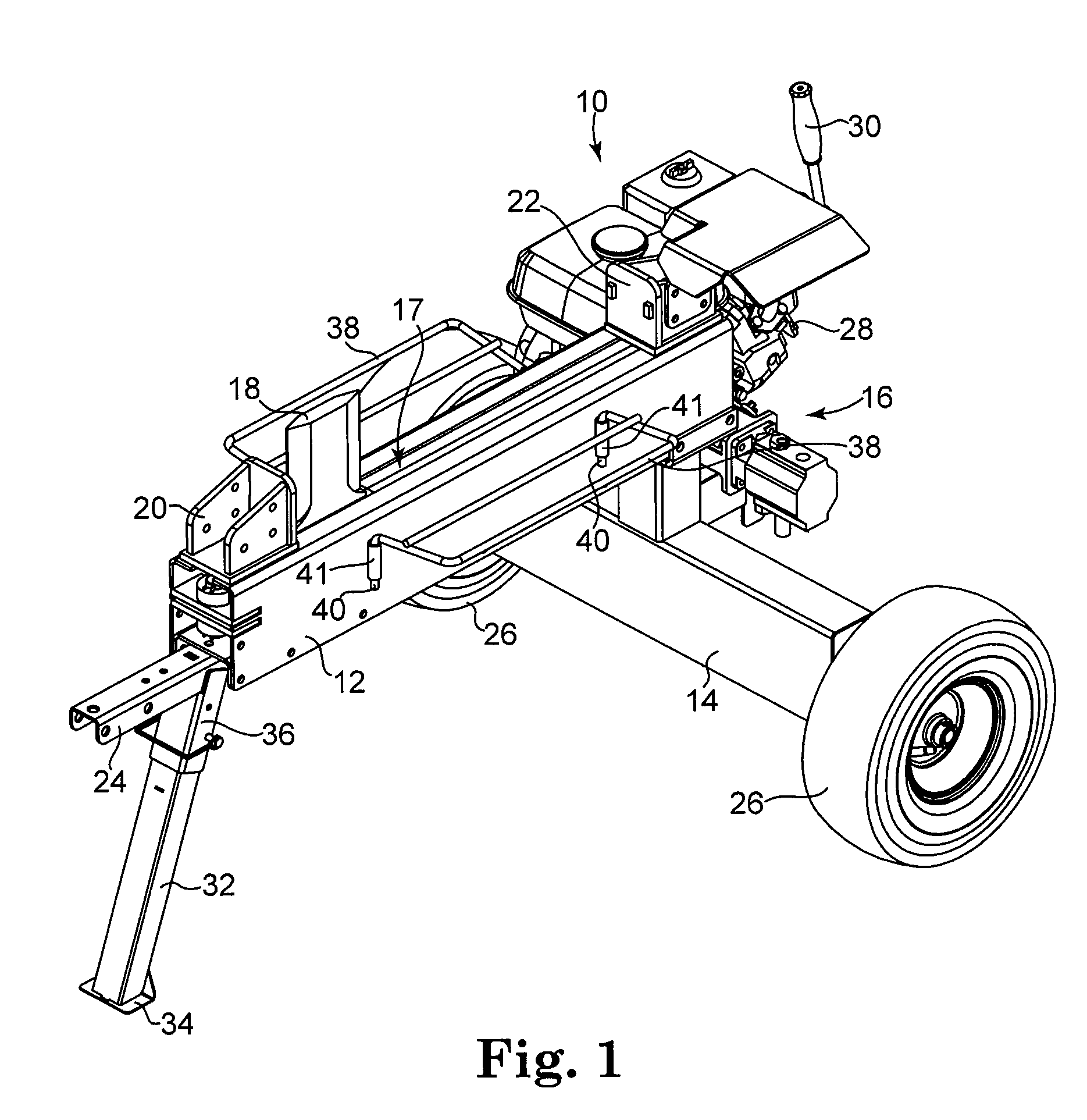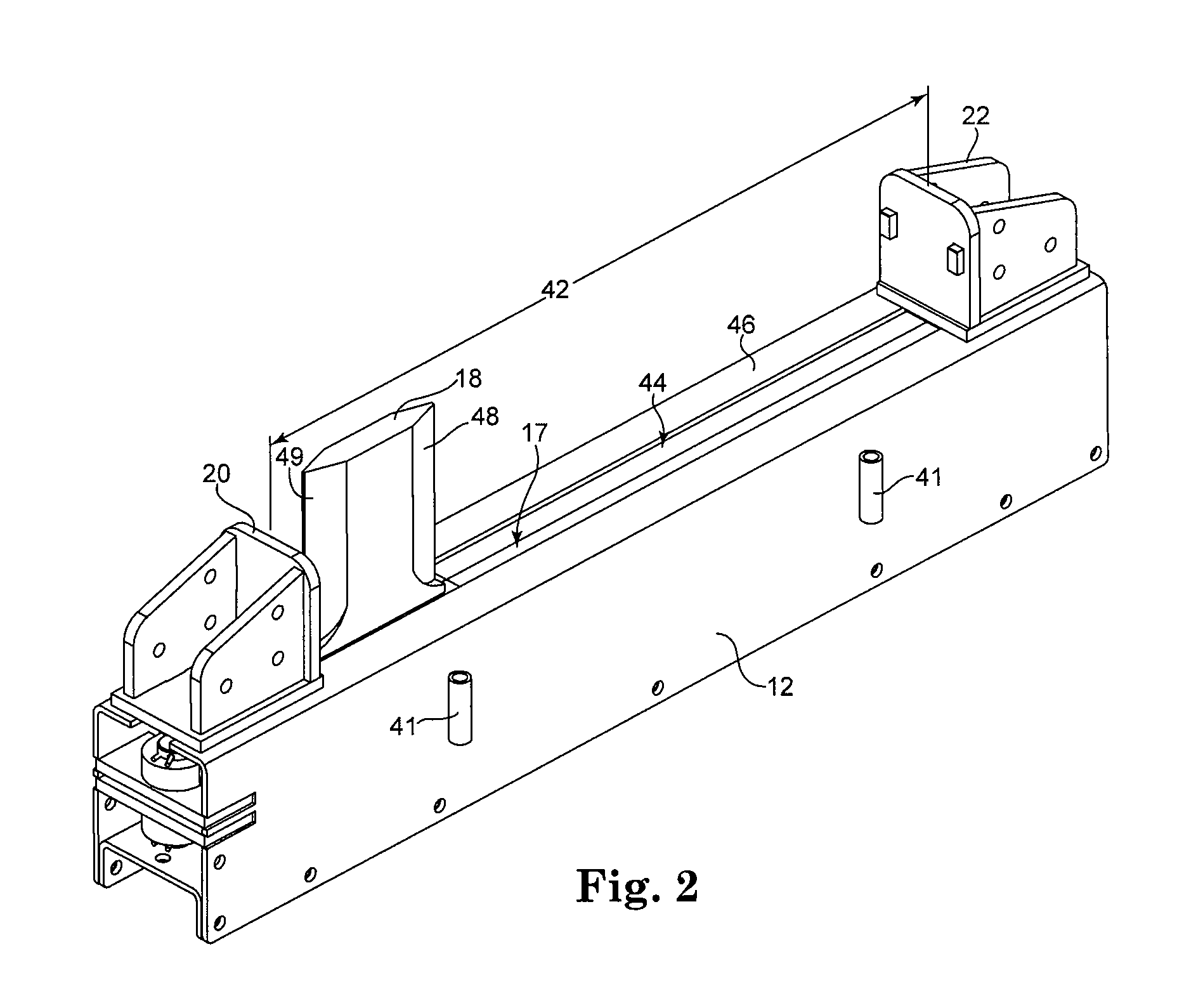Compact log splitter
a log splitter and compact technology, applied in the field of log splitters, can solve the problems of inconvenient use of horizontal splitters, inefficiency in the splitting process, and the required strength of log splitter components, and achieve the effect of minimizing the size of the splitter
- Summary
- Abstract
- Description
- Claims
- Application Information
AI Technical Summary
Benefits of technology
Problems solved by technology
Method used
Image
Examples
Embodiment Construction
[0017]FIG. 1 is a perspective view of a log splitter 10 in accordance with the present invention. As shown in FIG. 1, log splitter 10 includes support structure 12, wheel base 14, drive system 16 connected to support framework 12 and wheel base 14, a splitting device 17 having a splitting wedge 18 operably coupled to drive system 16, first stop member 20, and second stop member 22. Log splitter 10 shown in FIG. 1 is a trailer-type log splitter having hitch 24 and wheels 26 in order to couple log splitter 10 to a transport vehicle, allowing the splitter to be moved from location to location. Alternatively, those skilled in the art will appreciate that log splitter 10 may be stationary, variable in size and / or designed to be disassembled into smaller components for transportation, storage, etc., and reassembled when necessary for use.
[0018]Drive system 16 includes pump and motor assembly 28, control handle 30, a control valve (not shown), and a hydraulic cylinder or drive mechanism (n...
PUM
 Login to View More
Login to View More Abstract
Description
Claims
Application Information
 Login to View More
Login to View More - R&D
- Intellectual Property
- Life Sciences
- Materials
- Tech Scout
- Unparalleled Data Quality
- Higher Quality Content
- 60% Fewer Hallucinations
Browse by: Latest US Patents, China's latest patents, Technical Efficacy Thesaurus, Application Domain, Technology Topic, Popular Technical Reports.
© 2025 PatSnap. All rights reserved.Legal|Privacy policy|Modern Slavery Act Transparency Statement|Sitemap|About US| Contact US: help@patsnap.com



